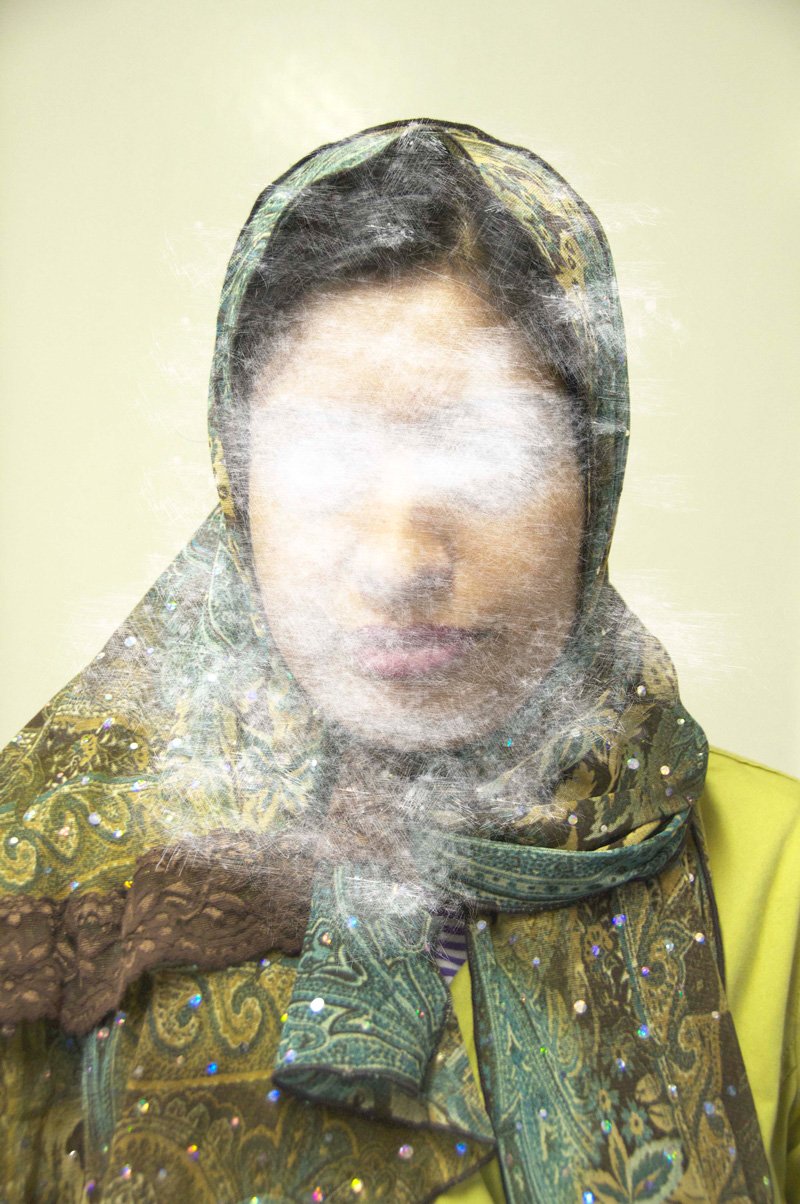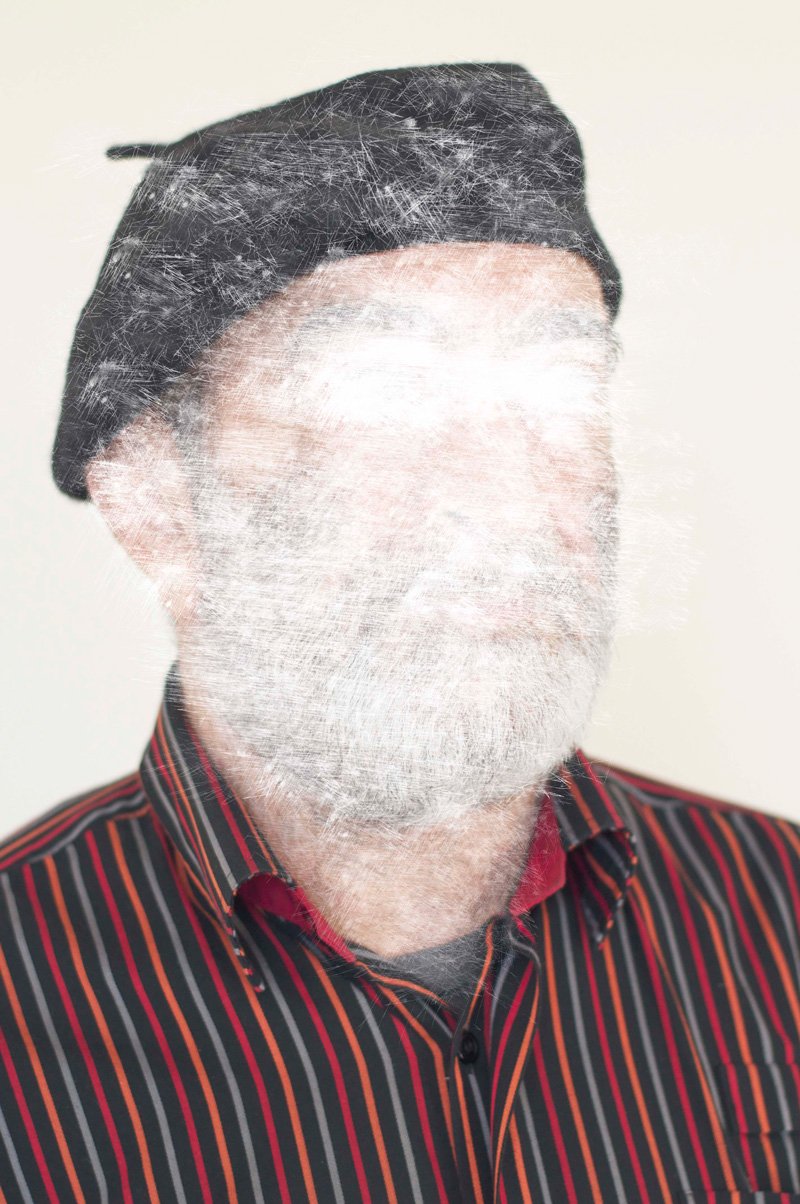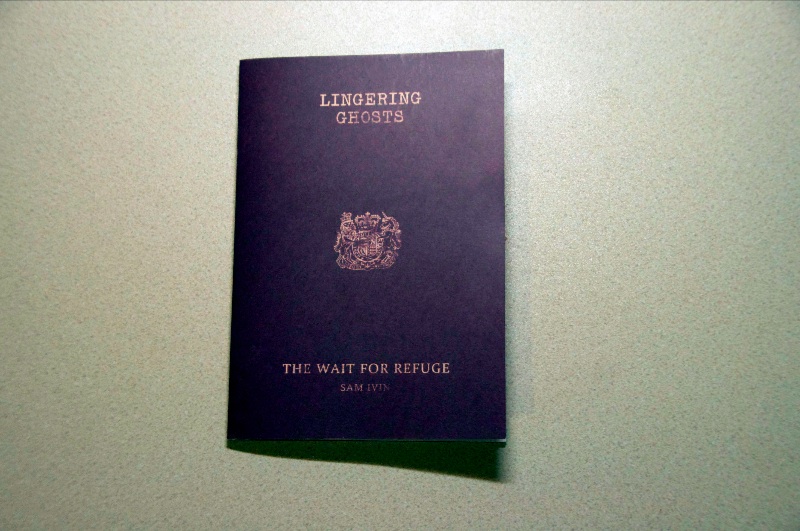
03 May Sam Ivin and Lingering Ghosts
[vc_row css_animation=”” row_type=”row” use_row_as_full_screen_section=”no” type=”grid” angled_section=”no” text_align=”left” background_image_as_pattern=”without_pattern” z_index=””][vc_column width=”1/6″][/vc_column][vc_column width=”2/3″][vc_column_text]
Sam submitted his work to a competition I was invited to co-judge, which focused on migration. His very distinctive images were awarded 1st prize, and I asked Sam if he would share with Documentary Photography Review details of his interest in documentary photography, and his project on refugees and asylum seekers in the UK.
[divider] An interview with Sam Ivin[/divider]
DPR:Please tell us a little about yourself, and your journey as a photographer.
SI: My name’s Sam Ivin, I’m currently a third year documentary photography student at the University of South Wales, Newport. My photography is mostly based around people and social issues including topics such as disability, healthcare and immigration.
I’ve always been interested in pictures and visual communication but my passion for photography really started when my parents recognized my enthusiasm and bought me my first SLR. Academic schoolwork was always a challenge for me and photography was the first time my tutors had really praised me for my work, so I continued to focus on it whilst studying my Art Foundation. It was here that I realised my main interest was documentary photography, so I applied for BA Documentary Photography course at Newport, and was lucky enough to get in.
The course has helped me develop my skills as a photographer and made me more aware of how to give a narrative to my pictures – but the best part is being able to meet people from all sorts of backgrounds who also love photography.
DPR: Your ‘Lingering Ghosts, the wait for refuge’ work recently won an award – tell us a little about this project.
SI: It’s an ongoing project which aims to give a small fragment of insight into some of the asylum seekers who hope to find refuge in Britain. It also seeks to raise questions about how the UK’s migration system treats those who arrive in our country seeking safety. These “Lingering Ghosts” are unable to fully contribute and integrate within the UK society, and are left in a place where their future is uncertain.
DPR: What motivated you to explore this subject?
SI: When I started, the UK Border Agency was in the process of being closed down, so migration was a really topical subject and appearing all over the news. I wanted to meet asylum seekers and talk to the people who had chosen to come to Britain. I was curious about this and wanted to find out more about their stories.
DPR: How did you go about initiating and carrying out this project?
SI: At first I did some initial research and visited a detention centre near Heathrow to try and understand how the migration process functions. I found a couple of asylum seeker “drop-ins” nearby, and visited them regularly. Drop-ins are regular meet ups where asylum seekers and refugees go to socialise, learn new skills, and seek advice.
All but one of the photos was taken in a Cardiff drop-in centre where I spent a couple of months visiting 2-3 times a week meeting asylum seekers, helping them learn English, and just generally helping out.
DPR: What challenges did you face in getting access to willing participants?
SI: In my naivety, I originally wanted to do portraits of the asylum seekers faces, simply in a passport style fashion. This proved difficult though as a lot of the asylum seekers weren’t comfortable with having their faces shown, due to issues in their home countries and not having full permission to stay in the UK yet. Hence why they’re now anonymous. Spending time at the centre and helping out really helped too.
DPR: Have you maintained contact with any of the people you photographed, and if so, has their situation evolved?
SI: I haven’t stayed in contact with any of the people I photographed, but I have chatted to a couple of the volunteers since, and the situation has changed for some. I know of a couple of people who now have permission to stay, and one man has been sent back to his home country recently, where he may possibly be in danger.
DPR: What was the thinking behind your method of photographing your participants (headshots with a solid background, etc), and creating the final images?
SI: The intention was always to create a passport like image to reflect how the migration authorities would see the person. As I mentioned earlier they needed to be anonymous so I decided to do it by scratching the photographs to reflect how asylum seekers can loose their sense of identity whilst they are waiting for permission to stay.
The scratching adds some intensity to the pictures too, and highlights asylum seekers frustration and possible experiences of violence in the past. Most asylum seekers aren’t allowed to work, and often live on £5 day, which is extremely frustrating when this happens for months, even years at a time.
It must be difficult when you are willing to earn a living but can’t due to where you’ve come from. I know that’s a big generalisation about asylum seekers, but in my experience many of them just want to earn an honest living and continue their lives in safety.
DPR: You created a self-published book in the form of a passport – how did you find the experience of creating a published version of your project?
SI: I made a 20-page A5 zine, something I’d never done before. It was a fun experience – I enjoyed creating the layouts and doing the graphics side of it. On the opposite page to the portraits I’ve placed the asylum seekers’ coat of arms from their home country, and a small quote from an interview. Having work in a book format gives you different opportunities of presenting the work – as opposed to just having a series online or on a wall. I still think it’s my favourite way of presenting this project, as it gives the audience a more tangible experience where they can flick through the pictures in their own time. I want to expand the project this summer so I can create a more polished book.
DPR: Where can people get a copy of the book, and find out more about you and your work?
SI: For more of my work, and to order the book, visit my website: www.samivin.com
[/vc_column_text][/vc_column][vc_column width=”1/6″][/vc_column][/vc_row]





